Ranking the interludes in Wind and Truth
We have at last come to the journey’s end on ranking the interludes in the Stormlight Archive, at least for this era.
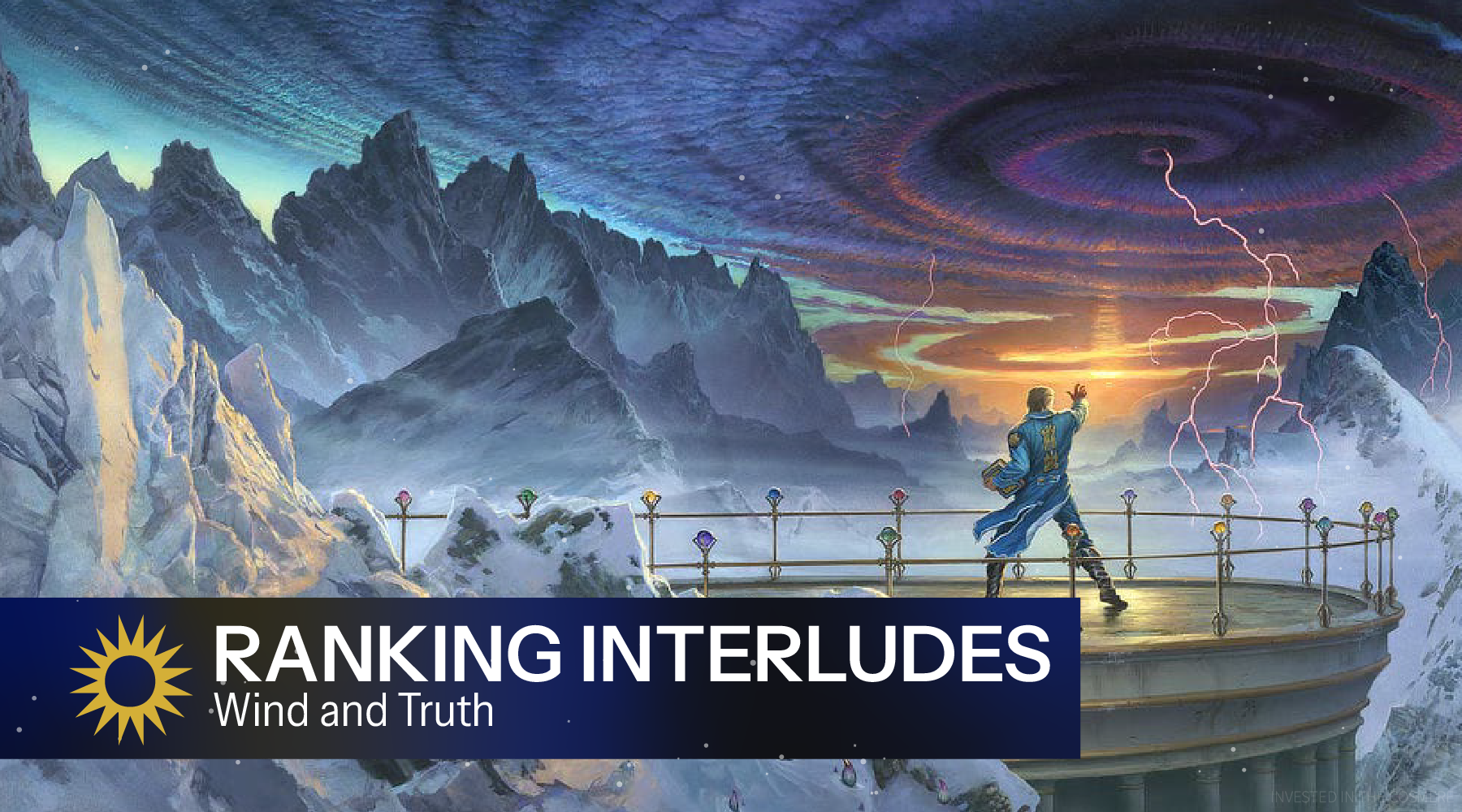
We have at last come to the journey’s end on ranking the interludes in the Stormlight Archive, at least for this era. If this is your first entry into the series, I have been ranking each book’s interludes based on the criteria shared all the way back in 2021 about 6 months after The Way of Kings was published. You can read that original blog post on his website, but I will summarize below.
Sanderson originally wanted to use the interlude chapters as ways to show the scope of Roshar without having to send a main character there for a visit. We could meet new characters, see cities and locations we’ve only heard about in passing, and maybe learn more about the rich lore of Roshar. Using these as a starting point, I ranked each interlude in the Stormlight Archive based on three criteria:
1) Did we explore a new part of Roshar? Are we seeing a new location, or meeting new people?
2) Did we learn more about something we already knew? Are we gaining more information about a topic or lore that we haven’t already been exposed to elsewhere?
3) Was it good? Was it fun to read, good, etc.
With these points in mind, I’ve ranked books 1 - 4, watching Sanderson’s approach to interludes change along the way.
In The Way of Kings, we saw the text-book definition of interludes, with some great chapters and some just OK ones.
Words of Radiance had a lot more quality S-tier interludes, but also started the trend of recurring point of view characters that began the departure from the original intent of world exploration.
In Oathbringer, we still have some amazing interludes, but begin to see more and more recurring point of views that add little to world building, but do a great job at building “off screen” suspense.
Finally, in Rhythm of War we see a near full commitment to the off screen plot development, and gain little in the way of additional world building.
Now it is time at last to complete this journey with Wind and Truth.
A change in the wind
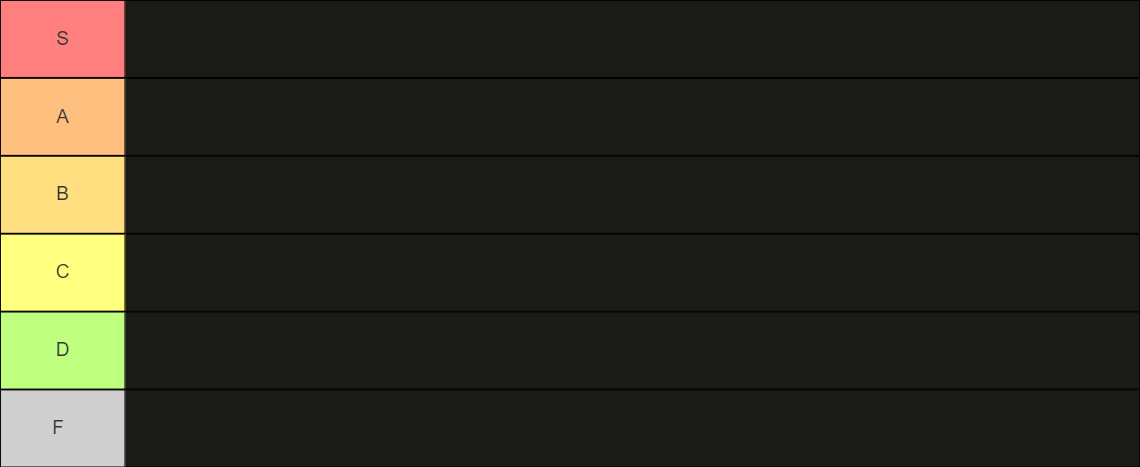
Wind and Truth changes the format that we’ve seen in nearly all of the previous interludes: we typically see three to four interlude chapters, with the occasional five thrown in for flavor. In Wind and Truth, each day is separated by only two interludes, with the first being a different character’s point of view, and the second being that of Taravangian. Exploration here is incredibly limited. We see a lot of returning characters, and see some pretty wild stuff, but it is very light on world building, and swaps that out for spectacle and drama.
As a result, I will be (kind of) grading Wind and Truth on a scale. Let’s get into it.
I-1: Kalak
Interesting start. In I-1: Kalak, we catch up with, you guessed it, Kalak in his time after Shallan and Adolin left Lasting Integrity. This interlude serves as a reminder that Kelsier is out a-huntin’ for Heralds, and delivers a massive plot reveal that shook me to my core when I read it the first time: Felt (a worldhopper from Scadrial), was the spy inside the Kohlin inner cirlce. Felt did reveal himself as a Scadrian in Rhythm of War when he exclaimed “Rusts!” just before Notum got attacked outside of Lasting Integrity, but we never got any sense that he might have been working with the Ghostbloods, though in hindsight it should have been obvious. Maybe it was to those who pry for these things, but it slipped my notice.
We don’t get a ton of pure worldbuilding, but the interlude had a jaw drop moment. I will be generous and start off Wind and Truth’s first interlude with a B-tier.
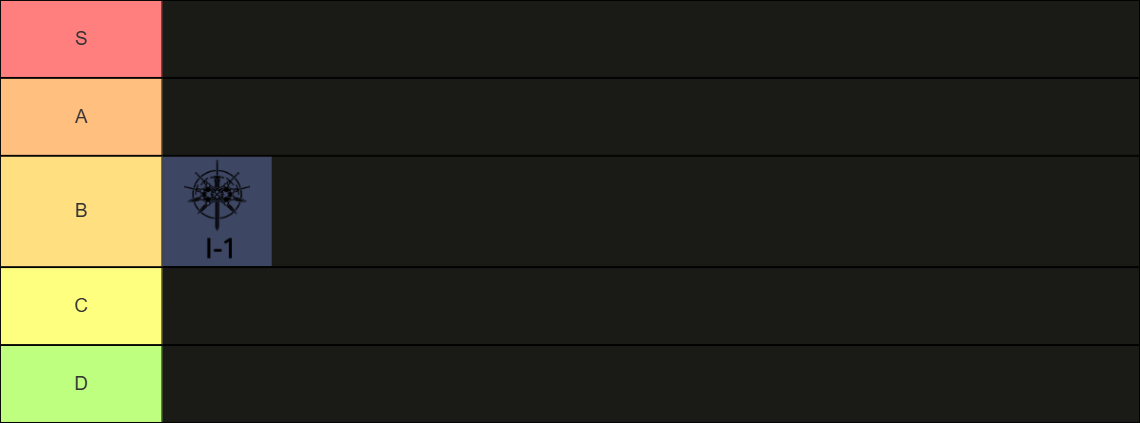
I-2: The Divided God
Better start. In I-2 we return to Taravangian and get to, what’s this? EXPLORE? We get to go to Ty Bayla and learn a little bit about their culture, something we haven’t done in an interlude in quite some time. We are also treated to a philosophical discussion between Taravangian and Cultivation about the nature of the laws that bind the shards. It’s mostly a recap of information we already know, but only in a conversation between gods can it be put so straight forward.
This is a fantastic interlude that does a great job of summarizing Taravangian’s philosophy and challenges of being a shard. I-2: The Divided God is a S-tier interlude.
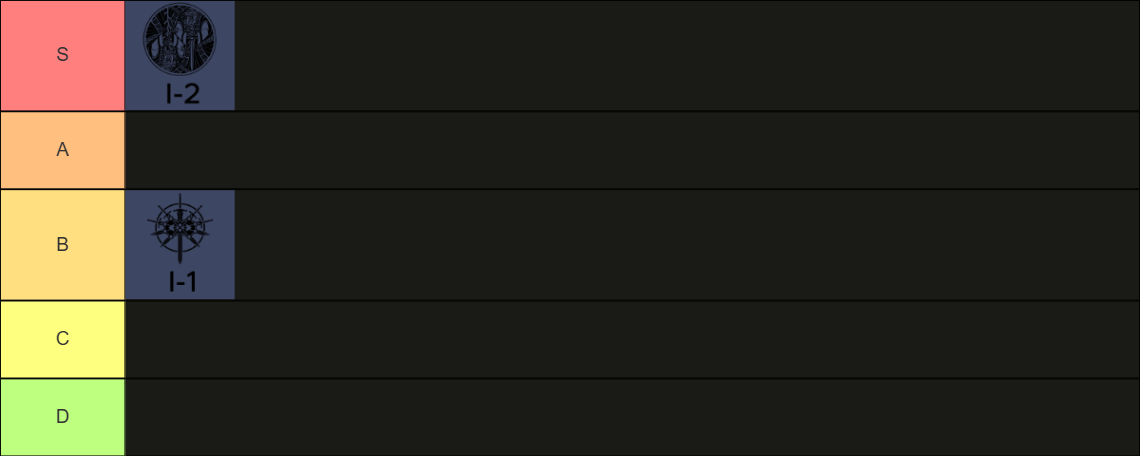
I-3: El
We get a novel perspective in I-3: El. We have seen only small glimpses of El, and didn’t know too much about him up until this point. Even after this interlude, we only really get to know him through his own dialogue, but more about what we clearly don’t know yet, which is his history. A mystery for now, we get a bit of plot deepening with Odium’s (I will use Taravangian and Odium interchangeably from here on out) plans.
I-3: El is a low C-tier interlude. Not bad by any stretch, but lacking in terms of exploration and lore development.
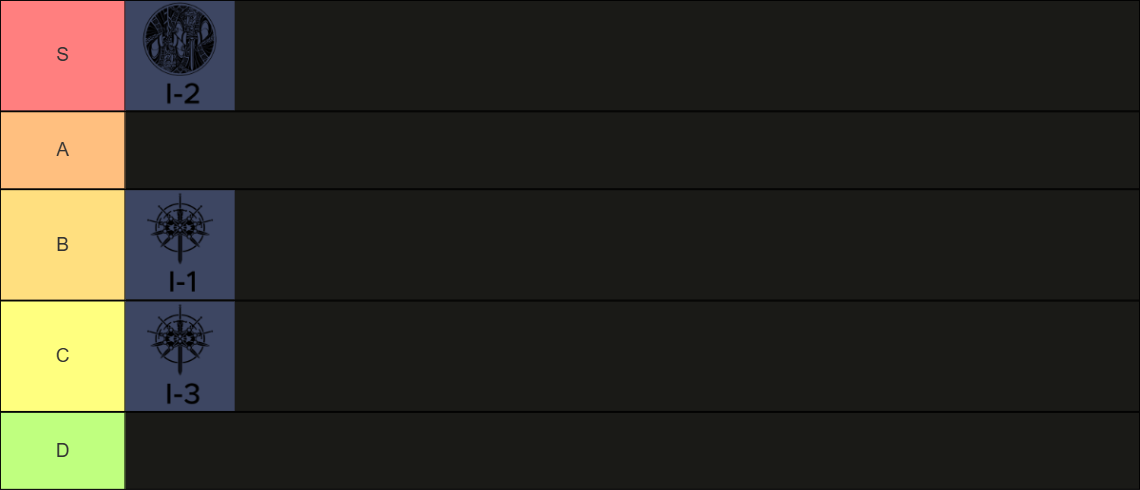
I-4: The Wrong Lesson
Back to Taravangian, we witness another conversation between him and Cultivation. This time we explore the broader scope of the cosmere, and bit more about how the shards view their relationships. Again, for those well invested in the cosmere, this is mostly a recap of information we have been previously presented, but done so clearly. I don’t hate it as an approach for catching the reader up on the stakes of the cosmere, but that doesn’t mean it will excel against the original intent of the interludes.
I-4: The Wrong Lesson is a C-tier interlude.
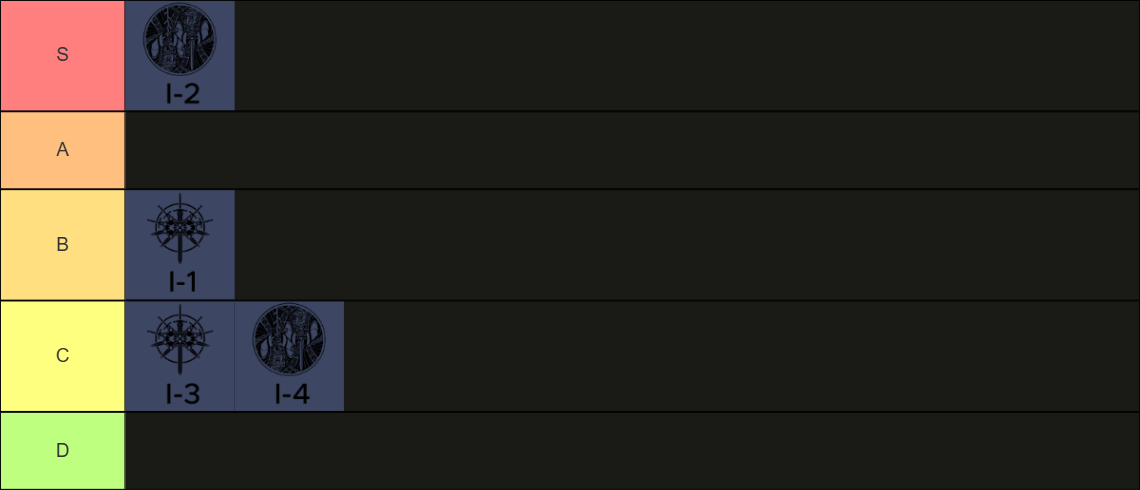
I-5: Baxil
How much new information is too much? I-5: Baxil is fairly wild. We return to two previous interlude characters: Baxil and Axis the Collector. Something wild, involving the Nightwatcher has happened to Baxil, and Axis is just doing his collector thing. There are a few interludes in Wind and Truth that seem to purposely set up future cosmere / stormlight plot points, and this is the first of them.
Let me be the first (maybe?) to call it: we will see how we get from “I want to go to the Nightwatcher to gain courage” to “I am the Crimson Memory you can’t see me unless you’re looking for me” in the Cosmere RPG!
Until then, I-5: Baxil is our first D-tier interlude in Wind and Truth.
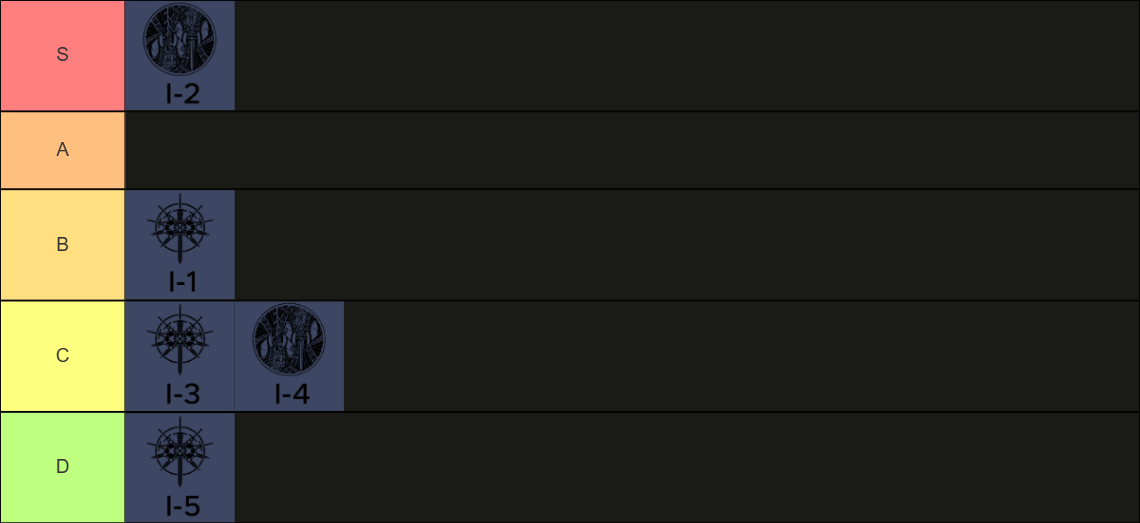
I-6: The Weight of Information
I-6 calls back to the off screen action we’ve been seeing Sanderson move towards as we get further in to the Stormlight Archive. We learn a lot in this chapter, but it’s more about the plot that is going on right now, vs. catching up on cosmere or Roshar lore. There are some great twists here but there is a lack of exploration that will keep this interlude lower on the list.
There are better good chapters and bad interludes in this book, and so I must place this at the D-tier.
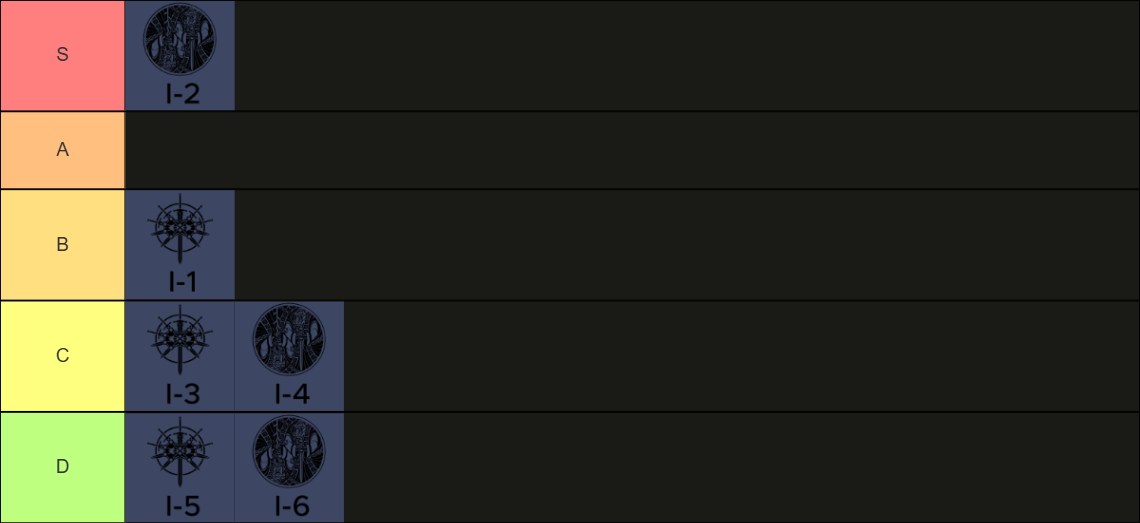
I-7: Moash
You know, I was ready to forgive Moash. Here me out. With the exception of Teft, what Moash did wasn’t too out of line compared to other characters that have been forgiven and accepted, in fiction and in real life. Think about Gaz and every bridgeman he purposely put in harm's way. The circumstances made the man, and Moash had circumstances. Then he took Teft, so storm him, and storm this chapter.
I will give it a C-tier because it's actually really cool and fun cross cosmere connection but doesn’t go in to enough detail to count as exploration. Sue me.
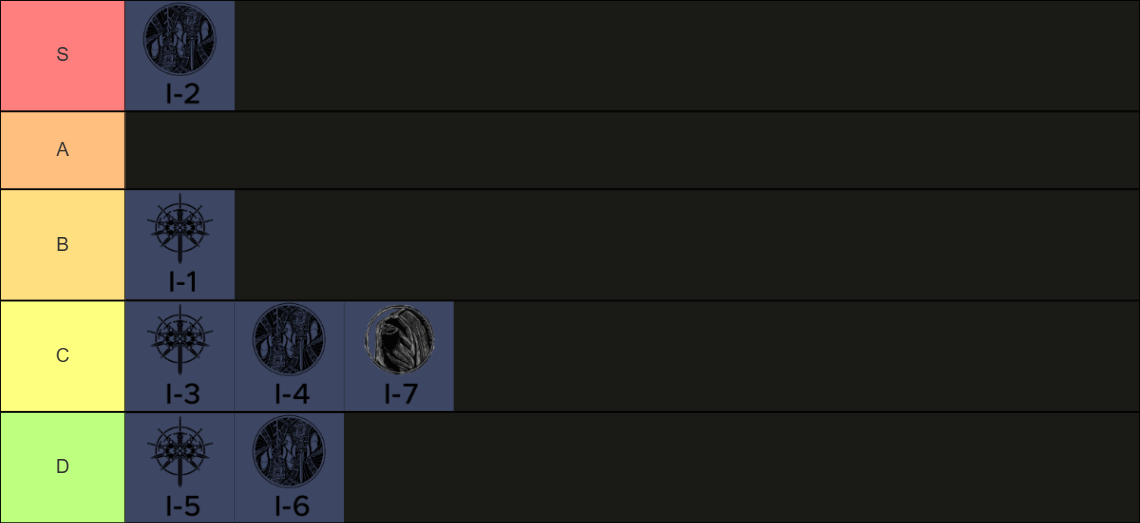
I-8: The Only Way
Short and sweet but awesome and terrible. It’s off screen action to the max, and is a perfect example of how the interludes have changed, but it's not an interlude. I say it in almost every book. I actually love what the interludes become, but I am grading them against the original intent.
The only way (ha) to grade this is a D-tier.
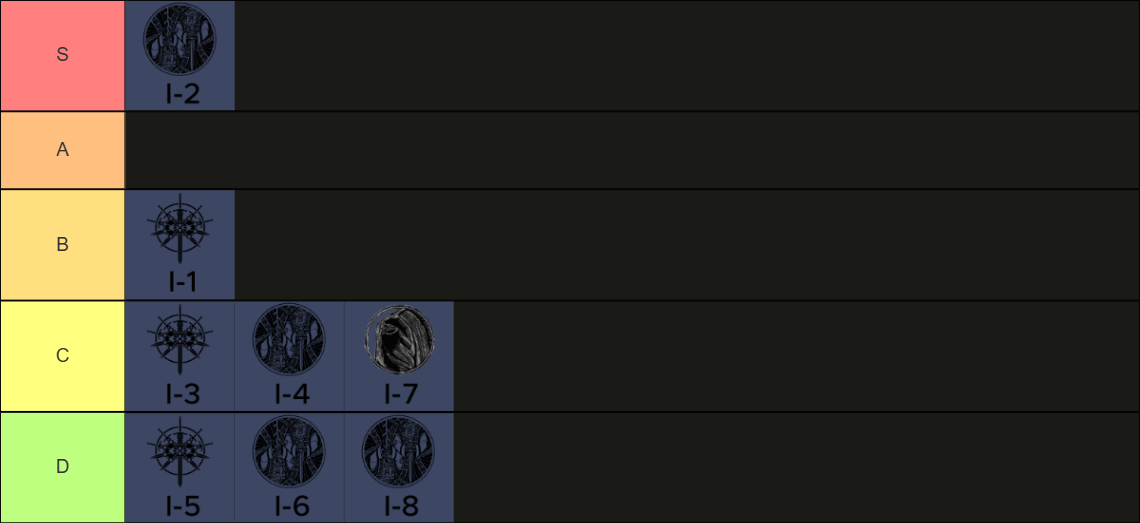
I-9 Zahel
It’s funny how long you can go without thinking about Axindweth, a character so important to the events of the Stormlight Archive, but so rarely mentioned. This chapter was a good read, you can put Zahel in almost any chapter and it will be, but light on the stuff that makes interludes.
I-9: Zahel is a D-tier interlude.
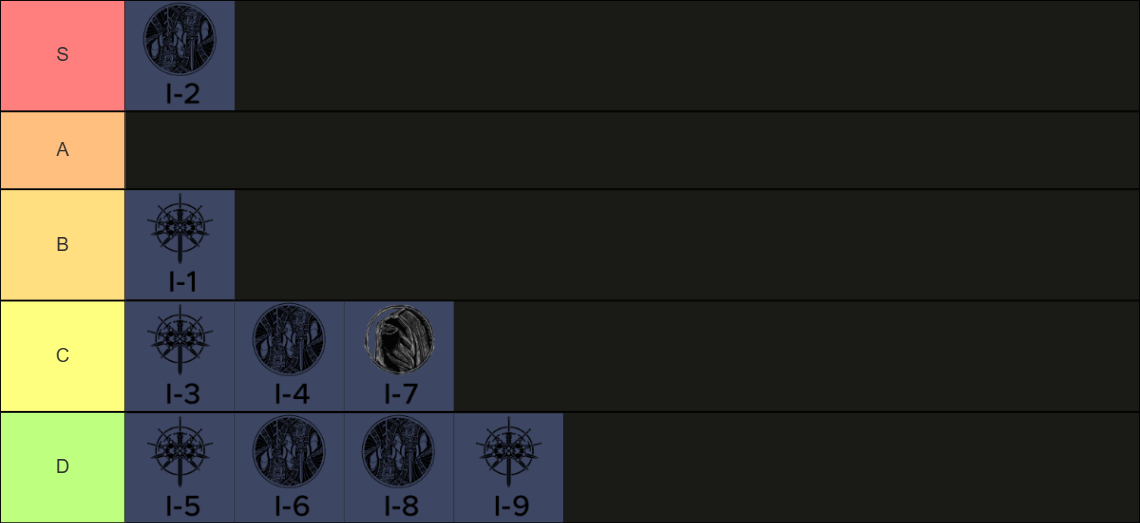
I-10: The Moment of Decision
Another Taravangian and Cultivation conversation, but the offscreen action is in full swing. We don’t learn much other than seeing Taravangian’s inner struggles with godhood find some kind of resolution.
Good chapter, bad interlude, D-tier.
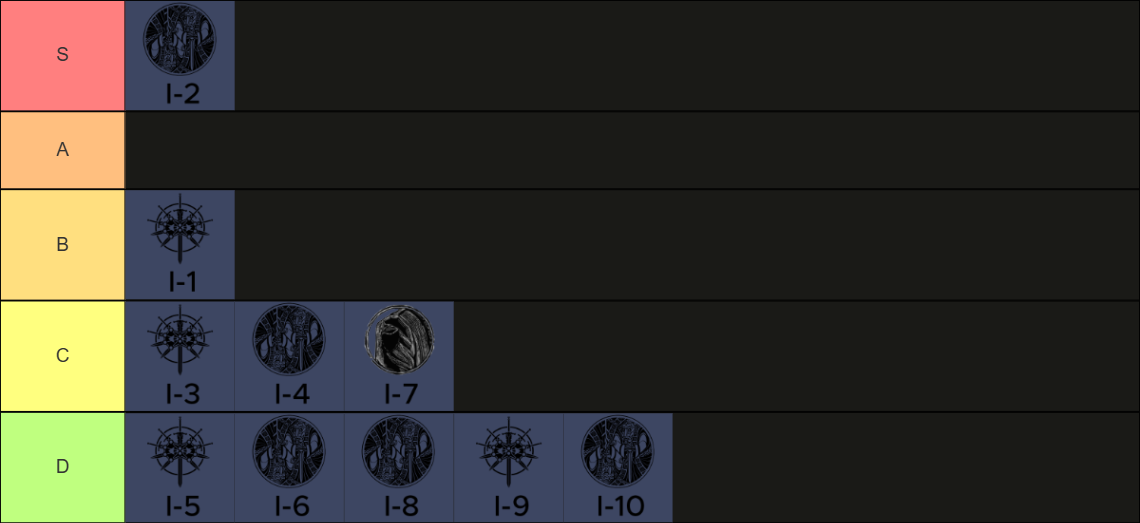
I-11: Dyel
S! S! S! S! S!
My first theories that led to me making this website was related to the Iriali and the Long Trail, and I’ve kept up on researching and thinking about it ever since. To actually experience the moment when the Iriali pack up and go was amazing. That alone could have been the interlude and I would have given it an S-tier, but you throw in Demoux, Galladon and Baon, and you have an absolute banger.
Easy S-tier.
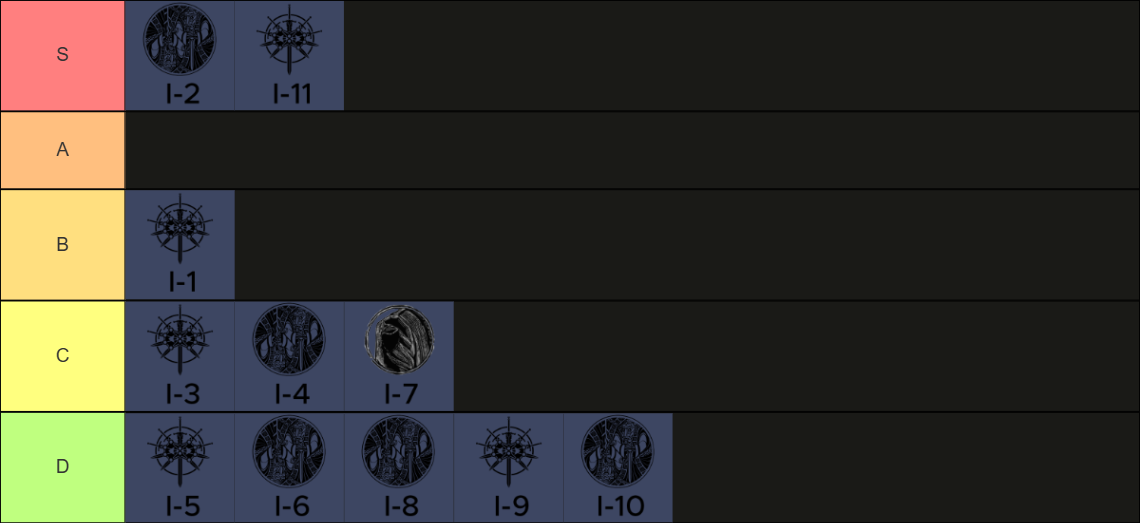
I-12: What Must be Done
This is a trick interlude to rank. On the one hand, we don’t learn a ton. You get to see a bit more of Cultivation’s plans and an outside perspective on her motivations, which is cool, but light. Then Odium destroys Kharbranth. It is a bone chilling moment and shows the culmination of Taravagians philosophy on leadership matched with his powers as a shard. Truly epic.
The rule of cool weighs heavy here, A-tier.
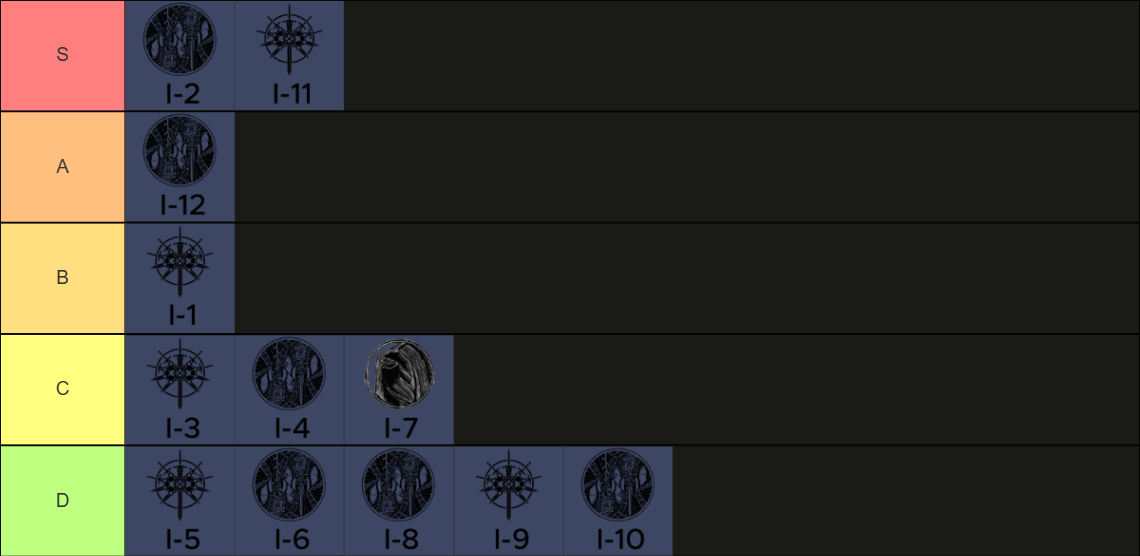
I-13: Lift
Storms I love Lift. Sanderson has a great way of taking his comic relief characters and making them shockingly complex, and Lift certainly fits the bill. We get bits here and there about the Tower’s abilities and more Edgedancer talents, but it’s nothing we haven’t seen before. Again, I am favoring the cool here, but I can’t go as high as I-12. If I were ranking this on just a “was it good” scale, this would be an easy S.
Instead, I’ll give in an A.
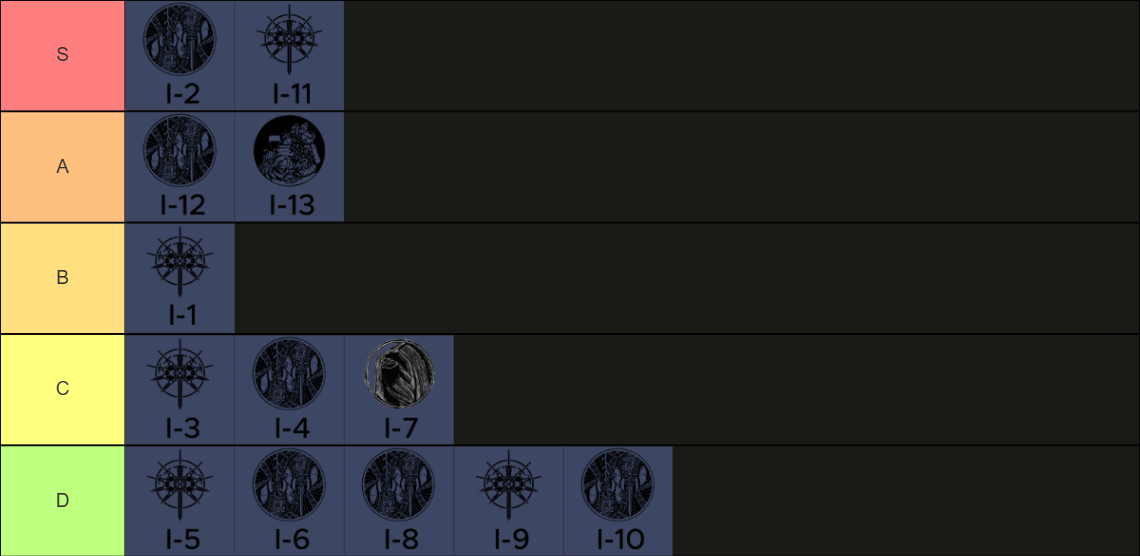
I-14: The Correct Future
Short and sweet, not much going on other than furthering the plot.
D-tier.
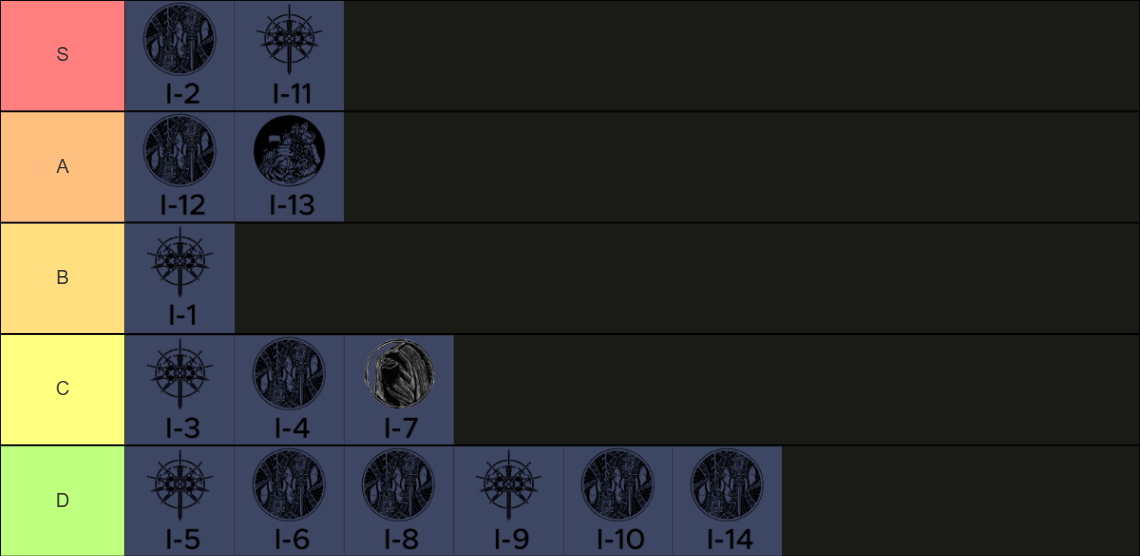
I-15: Rysn
Ah the Dawshards. I can’t wait to learn more about these powers. I loved the novella Dawnshard, and hoped we would see it play out in Wind and Truth, albeit in a more significant way than it actually did. We get to see a bit of what happens when two Dawnshards meet, but moreover, we get whole heaps of mystery surrounding Witt. Add Mythwalker to the list of names he has, and apparently disrupt the power of dawnshards through a command to the list of his capabilities.
Through intrigue alone, I will put this on an S-tier.
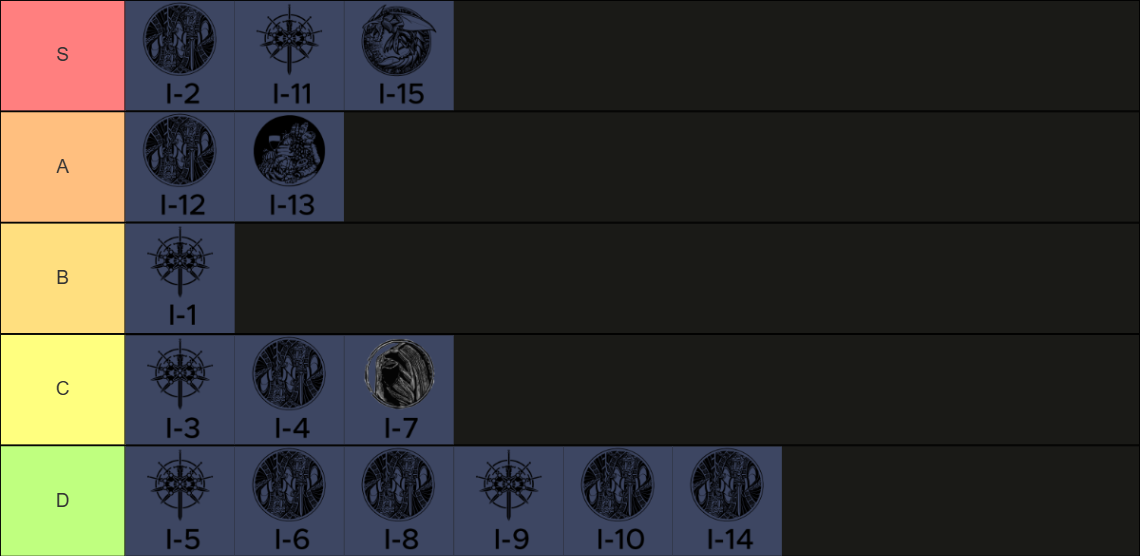
I-16: Surprise
More off screen plot, and another D-tier for old Odium.
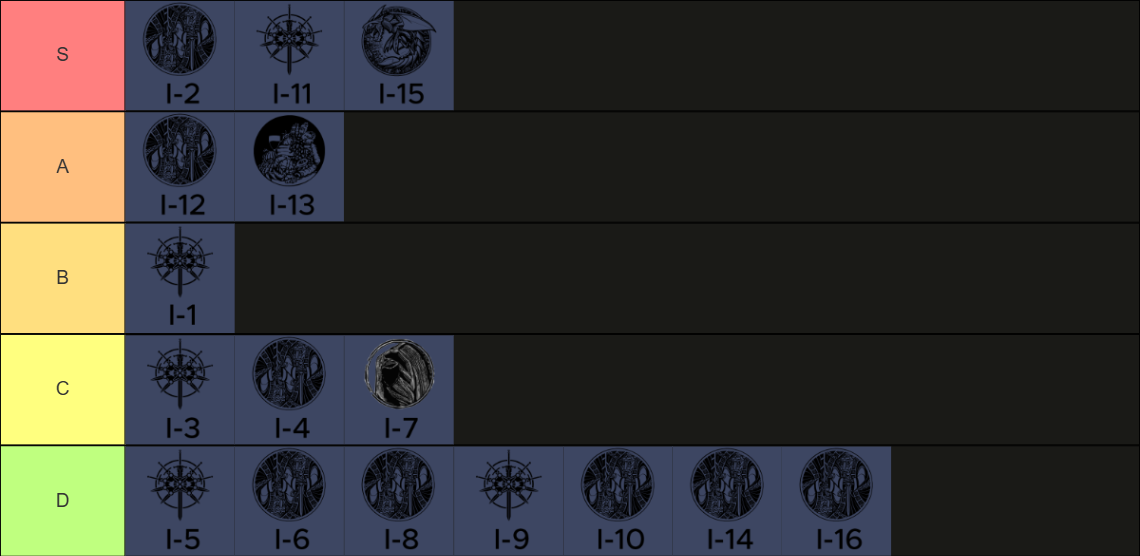
I-17: Dieno
I feel like there is something I’m missing in this interlude. See, the problem with reading the books so fast is that it takes the really smart thinkers in the cosmere community time to sit back and pull the threads together. I hope to have a few threads myself one day, but here I’m stumped. Following the guidelines of this ranking, I have to give this a low score. It’s as offscreen as you can get, but it feels like there should be more.
I-17: Dieno is a D-tier interlude.
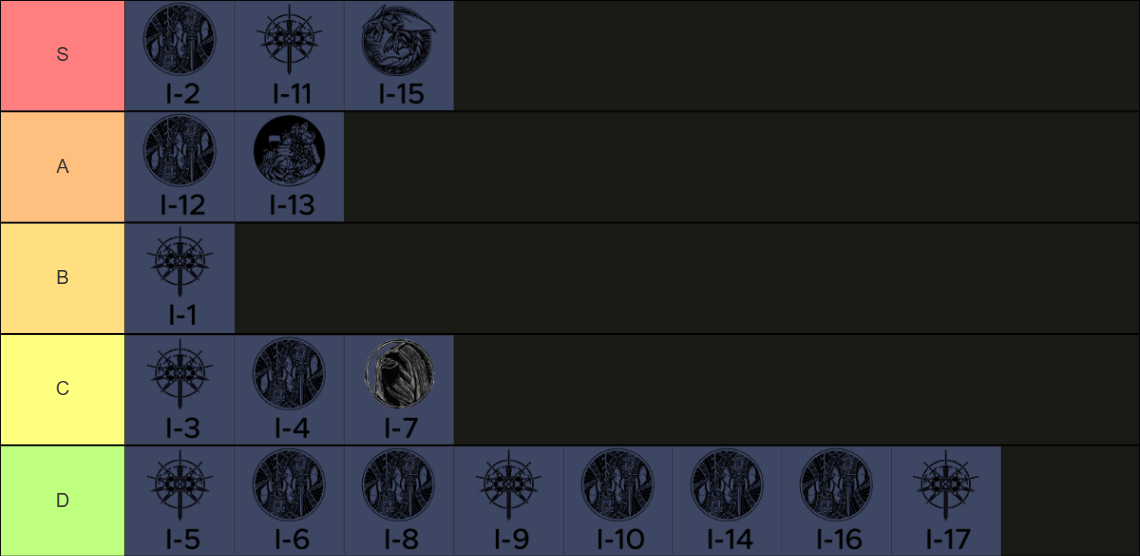
I-18: Conflux
We end the first era of the Stormlight Archive with a good not great interlude, and that’s OK. We learn a good amount about the nature of a shard’s power as Odium contemplates attempting to destroy honor. Again, it is kind of new information mixed in with a bunch of stuff that was inferred before, but presented in plain terms by Odium. I would say that what we learn, and how we learn it, has the same cool-value that early interludes like Lift and What Must be Done had.
I-18: Conflux ends the first era of the Stormlight Archive with a A-tier.
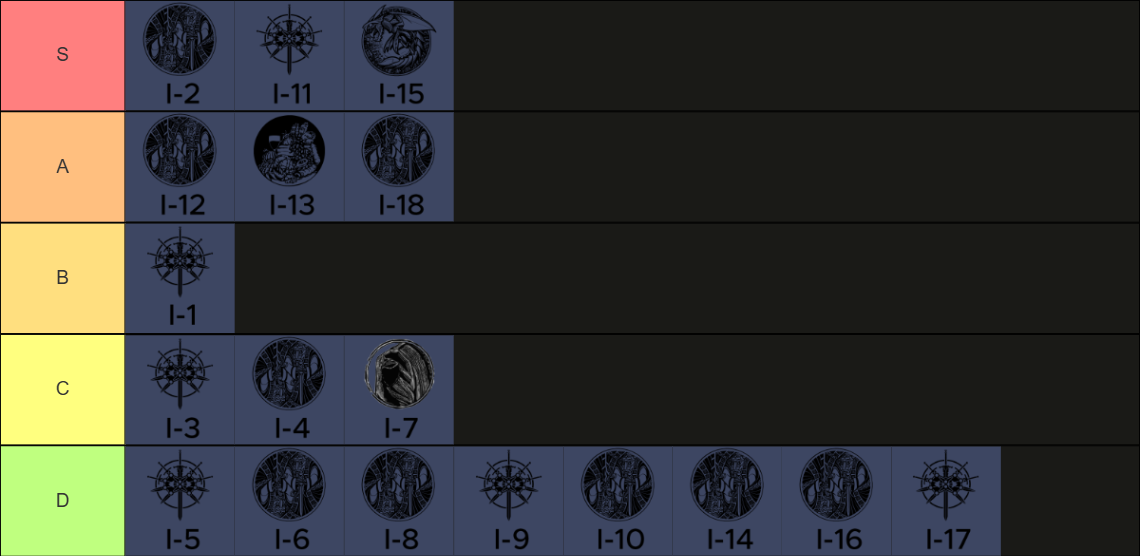
Not the end I expected
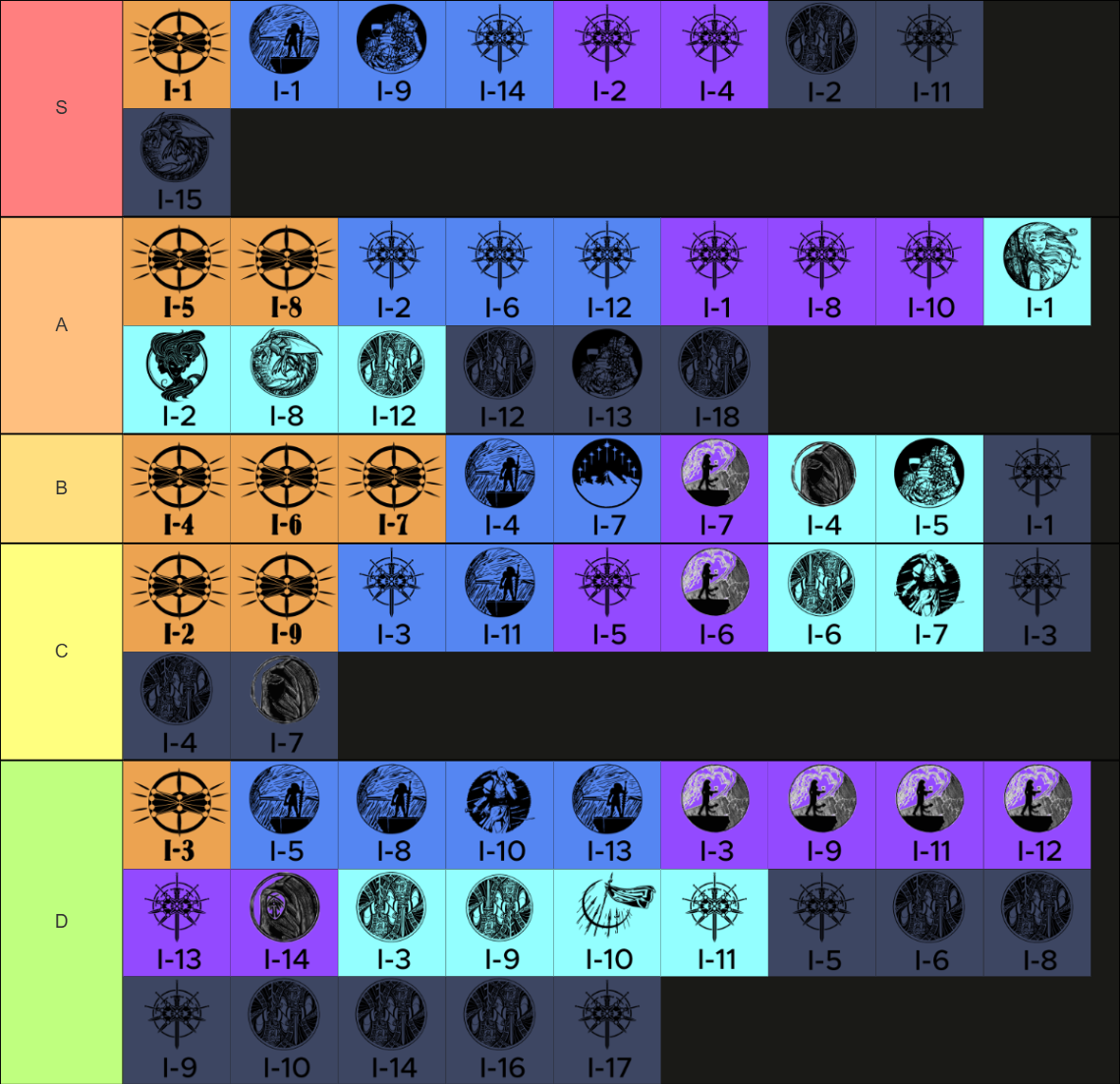
I have to say I am surprised. When I finished Wind and Truth, I was thinking about finishing this series, and how I would have to rank these interludes. Initially, I thought that the departure of purpose was going to put me on a path of very low scores, and with some exceptions, we would be looking at near all Ds and Cs. Yet here we are, 18 interludes in and we have some of the highest proportions of highly rated chapters.
Despite the change of purposes that the interludes saw across the Stormlight Archive, these chapters are fantastic. So often during these rankings, I found myself loving a chapter, but feeling obligated to rank it low on the list given the ideals of what it means to be an interlude. To wit, 34% of the interludes are ranked D.
In the coming weeks I am going to reflect on the evolution of the interlude across the Stormlight Archive.

